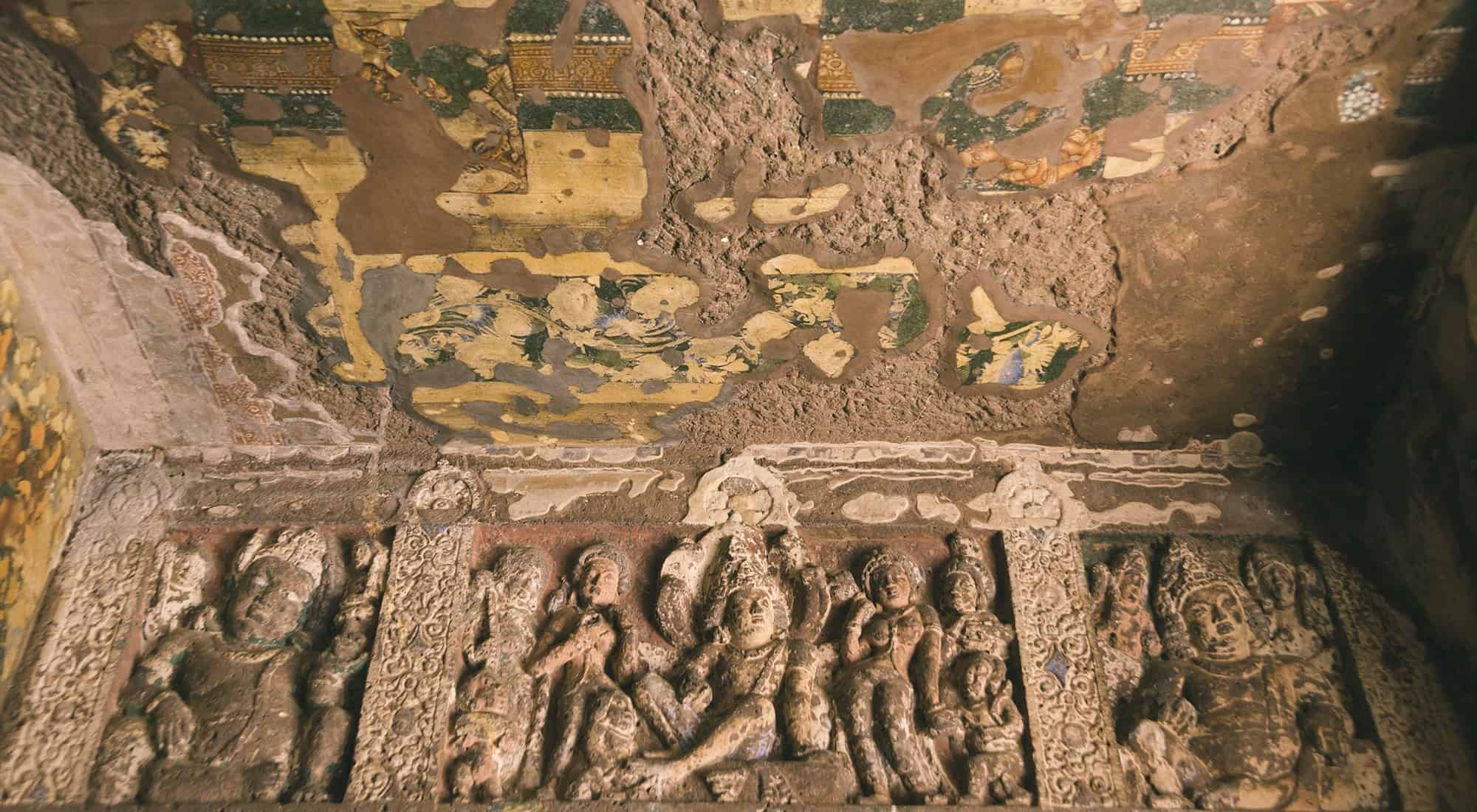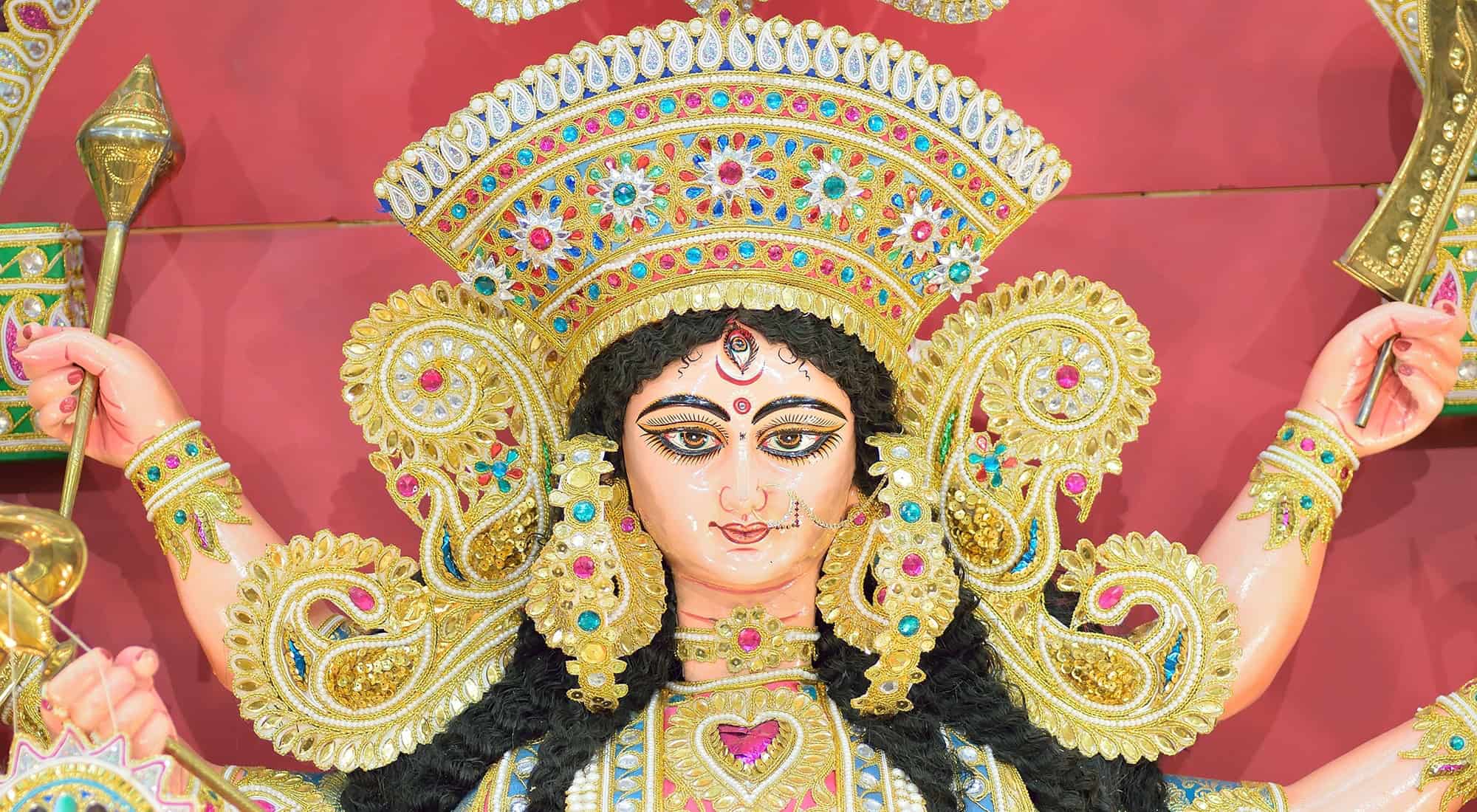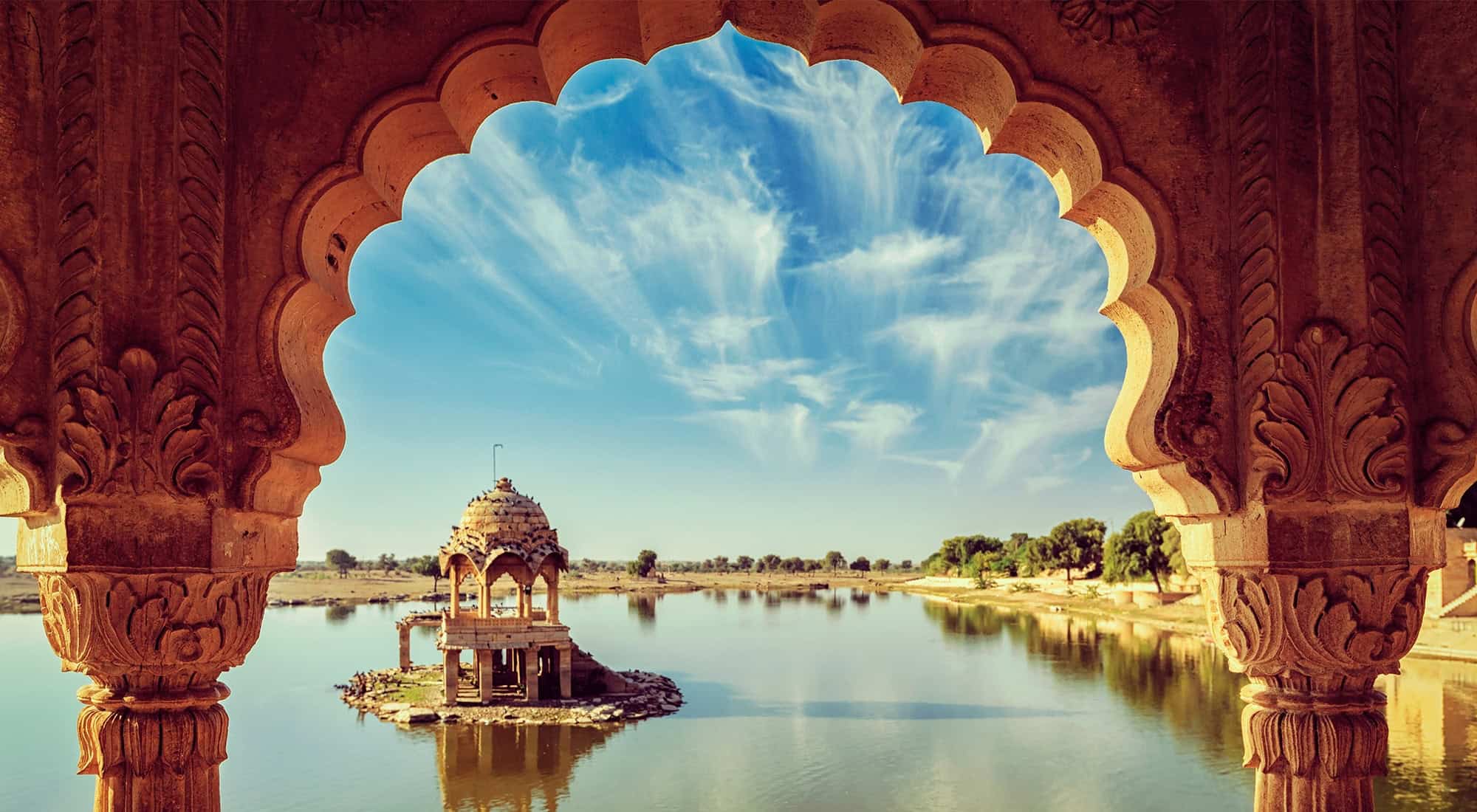Founded in AD996 as a scholastic institution, Chos Khor Gompa is found in the region of Spiti in Himchal Pradesh. It is the oldest living Buddhist establishment in this part of the world and its original layout was planned as a mandala centred around an Assembly Hall.
It comprises nine temples, four stupas and some cave shrines and has a good collection of art pieces, including murals and frescos covering the walls.
Many of the colourful murals come close to the pure Indian style identified with Ajanta. The technique required the surface to be coated with several thin layers of lime and yak-skin glue and burnished vigorously to provide the ‘ground’ which was then smoothed and freshened with animal fat and butter. Natural vegetable dyes and powdered stone colours were mixed with dzo milk and yak urine for painting.
The early Indian style murals used a profusion of reds and yellows with little stress on landscaping, the area around the principal figures being filled with small divinities. These images wear seraphic smiles and have half-shut dreamy eyes denoting introspective meditation. The later 17th-century paintings illustrate the Central Tibetan/Chinese art form where ultramarine takes over from the earlier dominance of reds and yellows, and landscapes become lively and vivid with the appearance of cliffs, swirling clouds, stylized flames, flora and fauna. Here the twists and turns of the limbs and the flowing elaborate drapery show great fluency.
Chos Khor Gompa is one of the few gompas in the Tibetan Buddhist-influenced areas of Ladakh, Lahaul and Spiti where the highly structured art of painting the complex Tibetan religious iconography is taught. What appears outwardly as a free art form is taught on lined paper where each shape and form is closely measured.










